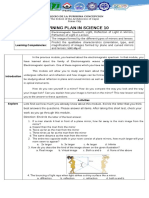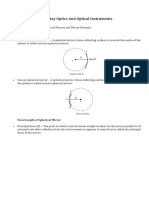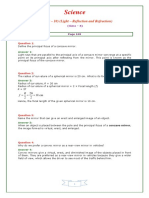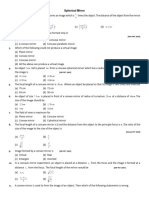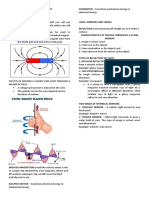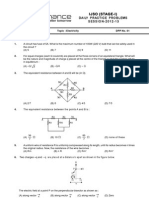0% found this document useful (0 votes)
22 views10 pagesClass Notes-01 - Reflection of Light - Physics
The document provides comprehensive notes on the reflection of light, detailing types of reflection, laws of reflection, and image formation by mirrors. It explains the characteristics of images formed by plane mirrors and spherical mirrors, including real and virtual images, as well as the use of mirrors in various applications. Additionally, it covers ray diagrams for image formation and the mirror formula relating object distance, image distance, and focal length.
Uploaded by
satpalbaghel1978Copyright
© © All Rights Reserved
We take content rights seriously. If you suspect this is your content, claim it here.
Available Formats
Download as PDF, TXT or read online on Scribd
0% found this document useful (0 votes)
22 views10 pagesClass Notes-01 - Reflection of Light - Physics
The document provides comprehensive notes on the reflection of light, detailing types of reflection, laws of reflection, and image formation by mirrors. It explains the characteristics of images formed by plane mirrors and spherical mirrors, including real and virtual images, as well as the use of mirrors in various applications. Additionally, it covers ray diagrams for image formation and the mirror formula relating object distance, image distance, and focal length.
Uploaded by
satpalbaghel1978Copyright
© © All Rights Reserved
We take content rights seriously. If you suspect this is your content, claim it here.
Available Formats
Download as PDF, TXT or read online on Scribd
/ 10

















